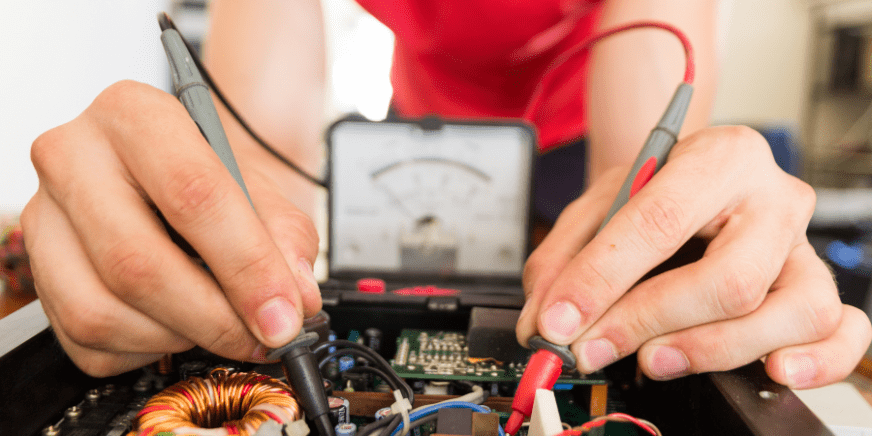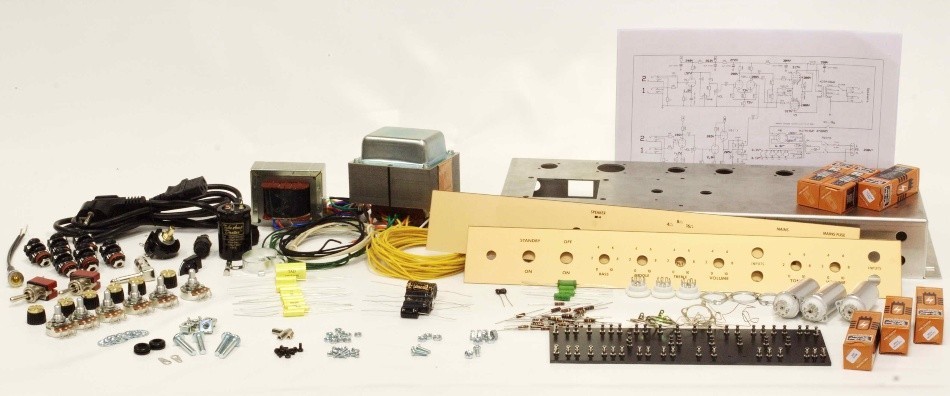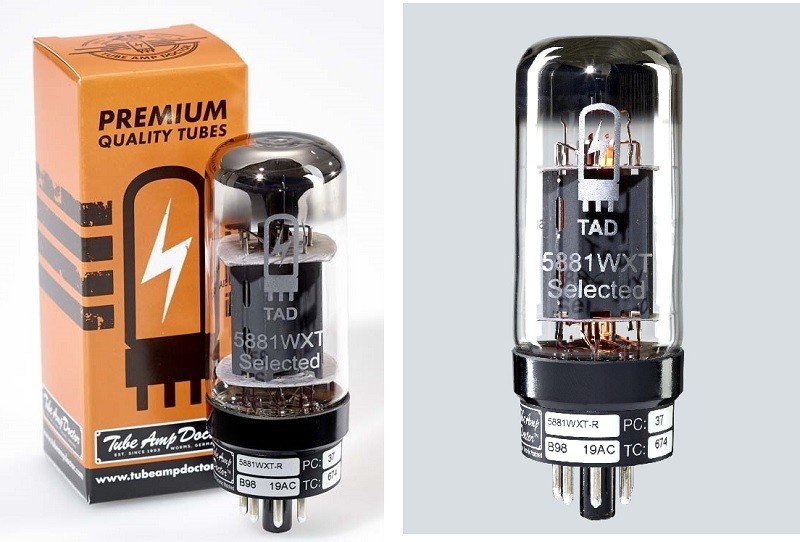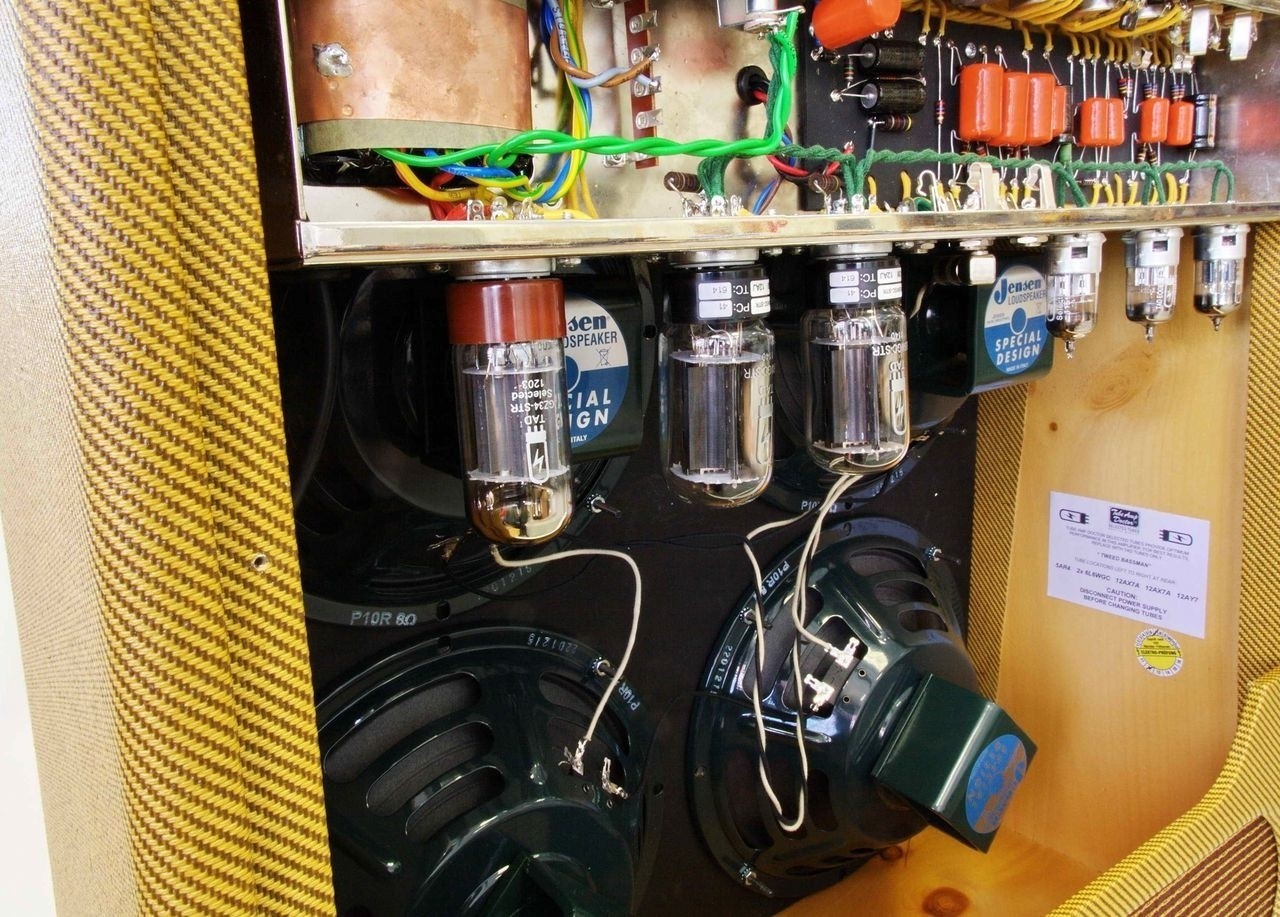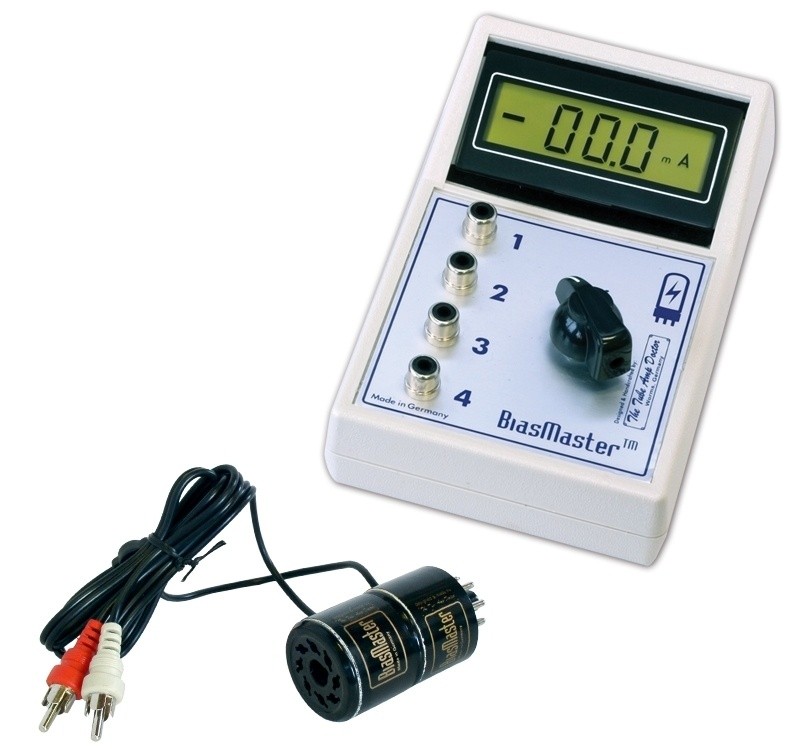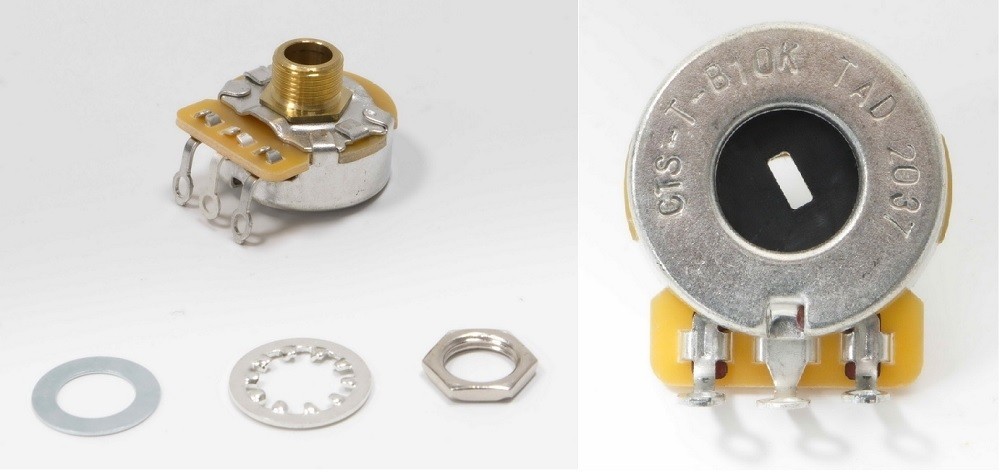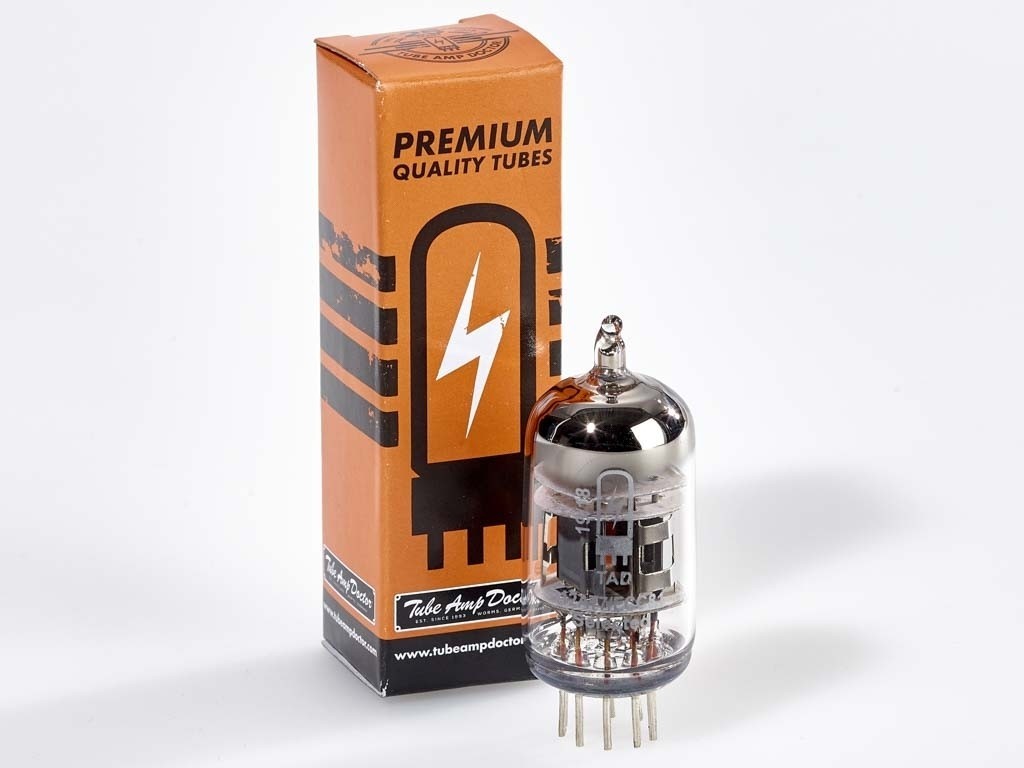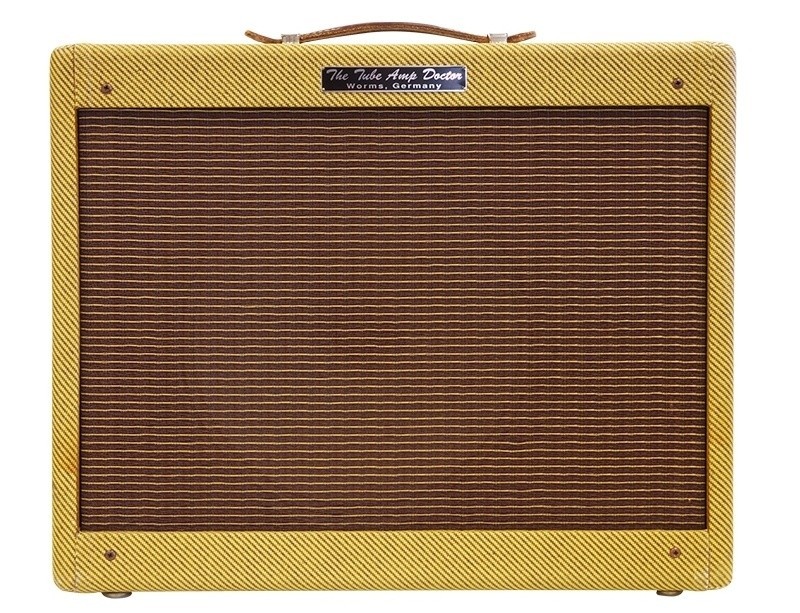« When is a bias adjustment of the quiescent current required? »
In our article on bias adjustment, we try to explain the technical background and functions of quiescent current, give tips on the correct settings and reveal which amplifiers need to be set in the first place.
Analogue technology needs analogue treatment
Tube amplifiers are still the undisputed number 1 when it comes to sound quality and feeling. No other amplifier technology delivers such an organic and “tangible” sound as electron tubes. Unfortunately, this organic, lively sound quality is not without its drawbacks. In addition to costs, heat generation and weight, the high maintenance level of tube amplifiers also plays a role. There are still a lot of uncertainties, especially when it comes to tube replacement – but at the latest, when we talk about adjusting the bias, is where most musicians draw the line.
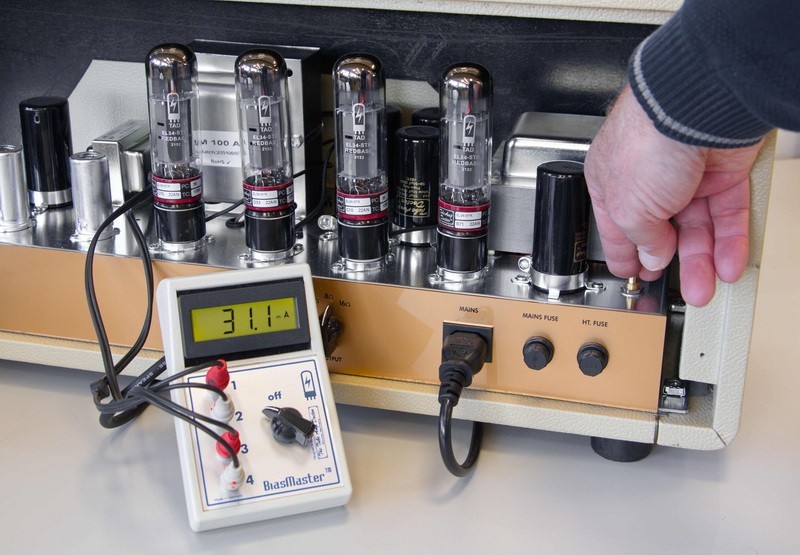
Amplifier bias adjustment – what is it actually?
Whenever an electron tube in an amplifier is not operated under full load, but is supplied with less energy, the bias has a considerable influence on performance and, at the end of the chain, also on the tone of the tube. The bias refers to the amount of electric current which passes through the tube while it’s underutilised. Due to the design of electron valves, different values and deviations of up to 20% can occur – even with the same valve type. In order to optimally adjust the amplifier and get the best performance out of the equipment, the quiescent currents of the individual electron tubes should be matched to each other during the bias check. In the following part, we explain which options are available for this for amps.
Setting Bias – Auto, Fast and Fixed Bias
Whether the quiescent current has to be adjusted when replacing a guitar amplifier’s tubes depends on the technical design of the respective device. Manufacturers use different calibration methods for the layout of their amps, which perform an automatic calibration or require the bias to be set manually. There are basically three different variants which have to be observed during the bias check:
Autobias
The amplifier is “intelligently” designed and regulates the bias of the power amplifier tubes or the power amplifier valve independently. A tube change is particularly quick and easy with autobias. But even with amps which have an autobias, attention should be paid to the most uniform value of the electron tubes used.
Fast Bias
Guitar amplifiers which are equipped with a fast bias operate with constant quiescent currents, and the calibration of electron valves cannot be performed. Here it’s important to know the correct values and to hit them as accurately as possible using matched electron tubes.
Fixed Bias
The fixed bias is present in classic Class A or Class AB push-pull amplifiers. Here, the value is the same for all electron tubes and must be hit as accurately as possible during a valve change. So the setting is particularly important with these amps.
Setting bias – instructions
In order to set the correct value of the quiescent current on an amplifier, a certain amount of experience and technical skills are required. However, beginners in particular should know that adjusting the quiescent current will only go well if you have the necessary calmness and serenity – practice also makes perfect here! The following is a general step-by-step guide.
Step 1: Preparation
First, the following parameters have to be known to set the bias: the level of the anode voltage, the amplifier type (class A or Class AB) and the type of electron tubes used. Once all these parameters have been determined, you can find the target value of the quiescent current. This target value can be determined using tables and provides a good indication of the optimal setting.
Step 2: Measuring the quiescent current
When measuring the quiescent current, experts use different methods, since measuring a current is not as simple as, for example, measuring an applied voltage. The resistance measuring method is used when a measuring resistor has been soldered into the cathode line and makes a voltage drop measurable. If this measuring resistor is not already installed by the manufacturer, you’ll have to work with auxiliary equipment.
The Amp-Doctor has just the right equipment for measuring in its range. The quiescent current can be determined easily and accurately using the BiasMaster System. This BiasMaster with Octal or Noval adapter is available to match the respective tubes. You can then optimally set the desired bias point using the bias potentiometer or trimmer, but we’ll get to that in the next section.
In the so-called shunt method, the measurement of the quiescent current is based on the data of a (very good!) measuring device. However, this method is reserved for professionals – the currents and voltages which occur are not suitable for the home workshop.
Step 3: Setting the bias
If all the necessary values are known, it’s time to adjust the quiescent current. Amplifiers usually provide their own quiescent current potentiometer for this purpose. This either supplies all electron tubes with the same value or can be present individually for each tube. After comparison with the table, the currents can now be set and adjusted to each other.
Frequently Asked Questions
Setting the quiescent current is a technical idiosyncrasy which often drives even experienced guitarists to employ the help of a professional. We’re constantly receiving questions on this topic, which we’ll try to answer in the following part:
Do I have to calibrate all the electron tubes?
No, calibrating tubes isn’t always necessary. In the case of power amplifier tubes, the quiescent current setting is much more important than with preamplifiers. In a power amplifier, the power amplifier tubes react much more sensitively to different values. So, when changing the preamp tubes, no bias adjustment is necessary.
Calibrating tubes – hot vs. cold
When setting the bias, a distinction is made between hot and cold setting. This denotes the actual set value: if it’s oriented towards the maximum value, we call it a hot measurement, while towards the minimum it’s a cold one. The two variants have an impact on the sound and service life of the electron tube in the power amplifier: at hot values, the tubes sound more open and more powerful, but have shorter lifespans due to the higher load in the power amp. With cold values, the tubes therefore live longer, but the Class A or Class AB amplifier cannot quite reach its top performance in terms of sound!
When do I have to measure tubes?
Power amp tubes usually have to be calibrated after replacement; the exception here are amps which have an autobias. However, we recommend that you first bring the power amplifier tube to only roughly the desired value and make the fine bias adjustment after a certain “running-in phase” of a few hours. This allows the bias point to be determined faster and more precisely.
Power amplifier tube – The right choice
While it should be clear that the electron tube should fit the amp, the symmetry of the individual power amplifier tubes to each other also has to be taken into account. This is why TAD offers specially coordinated packages in which each power amplifier tube has been measured and selected. The design-related deviations are minimised and the calibration effort (and sound) is reduced!
Amplifier bias adjustment – conclusion
You don’t have to be an electrical engineer to perform a tube change, but you should have some basic knowledge before you start setting the quiescent current. Although not all tube amplifiers require this setting, if it is carried out, it must be done with calm and care.
A good support for calibration are matched tubes, which are perfectly matched to each other on the basis of their output data – so the bias adjustment of the quiescent current is much easier!
___________________________________________________________________________________________________________________________
Image sources:
Title image: © thirdkey – stock.adobe.com
Vacuum valves: © Andrey Chmelyov – stock.adobe.com
 Tubeampdoctor Magazin
Tubeampdoctor Magazin
